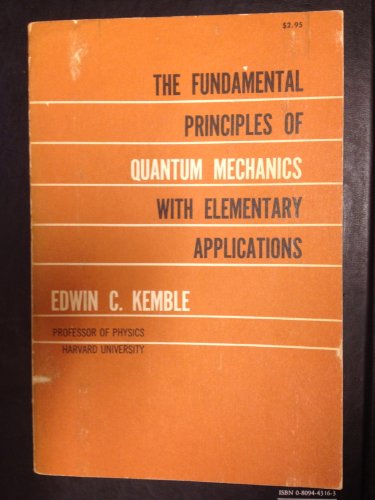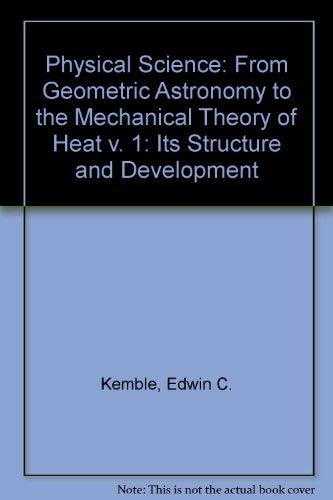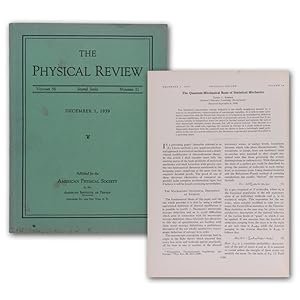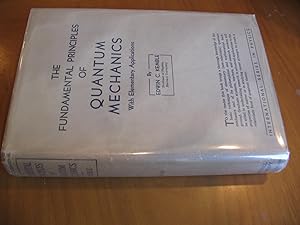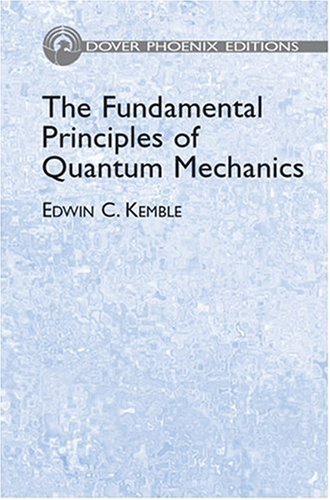kemble edwin c c (16 Ergebnisse)
Suchfilter
Produktart
- Alle Product Types
- Bücher (16)
- Magazine & Zeitschriften (Keine weiteren Ergebnisse entsprechen dieser Verfeinerung)
- Comics (Keine weiteren Ergebnisse entsprechen dieser Verfeinerung)
- Noten (Keine weiteren Ergebnisse entsprechen dieser Verfeinerung)
- Kunst, Grafik & Poster (Keine weiteren Ergebnisse entsprechen dieser Verfeinerung)
- Fotografien (Keine weiteren Ergebnisse entsprechen dieser Verfeinerung)
- Karten (Keine weiteren Ergebnisse entsprechen dieser Verfeinerung)
- Manuskripte & Papierantiquitäten (Keine weiteren Ergebnisse entsprechen dieser Verfeinerung)
Zustand Mehr dazu
Einband
Weitere Eigenschaften
- Erstausgabe (4)
- Signiert (Keine weiteren Ergebnisse entsprechen dieser Verfeinerung)
- Schutzumschlag (3)
- Angebotsfoto (2)
Sprache (2)
Gratisversand
Land des Verkäufers
Verkäuferbewertung
-
Zustand: Good. Good condition. A copy that has been read but remains intact. May contain markings such as bookplates, stamps, limited notes and highlighting, or a few light stains.
-
Paperback. Zustand: Good. No Jacket. Pages can have notes/highlighting. Spine may show signs of wear. ~ ThriftBooks: Read More, Spend Less.
-
Hardcover. Zustand: Fair. No Jacket. Readable copy. Pages may have considerable notes/highlighting. ~ ThriftBooks: Read More, Spend Less 0.88.
-
Hardcover. Zustand: Good. No Jacket. Pages can have notes/highlighting. Spine may show signs of wear. ~ ThriftBooks: Read More, Spend Less 0.88.
-
The Fundamental Principles Of Quantum Mechanics With Elementary Applications
Verlag: Dover, 1958. 611 pp., 1958
Anbieter: Antiquariaat Hortus Conclusus, Den Haag, Niederlande
Paperback. Spine a bit worn / discoloured, else a good copy. Please see description or ask for photos.
-
Physical Science, Its Structure and Development Volume 1
Verlag: The M.I.T. Press, Mass, 1966
Anbieter: Between the Covers-Rare Books, Inc. ABAA, Gloucester City, NJ, USA
Erstausgabe
Hardcover. Zustand: Very Good. First, vol. 1. Very good minus Loose binding, bumping of corners/ends, light soiling of panels/spine, Volume 1 only, name in pen on end pg.
-
Physical Science: Its Structure and Development, from Geometric Astronomy to the Mechanical Theory of Heat
Anbieter: Ammareal, Morangis, Frankreich
Hardcover. Zustand: Bon. Ancien livre de bibliothèque. Légères traces d'usure sur la couverture. Traces d'humidité sur les premières et dernières pages. Edition 1966. Ammareal reverse jusqu'à 15% du prix net de cet article à des organisations caritatives. ENGLISH DESCRIPTION Book Condition: Used, Good. Former library book. Slight signs of wear on the cover. Traces of humidity on the first and last pages. Edition 1966. Ammareal gives back up to 15% of this item's net price to charity organizations.
-
The Fundamental Principles of Quantum Mechanics with Elementary Applications
Verlag: Dover, New York, 1958
Anbieter: Between the Covers-Rare Books, Inc. ABAA, Gloucester City, NJ, USA
Softcover. Zustand: Very Good. Reprint. Very good in wrappers (spine faded).
-
Fundamental Principles of Quantum Mechanics with Elementary Applications
Anbieter: online-buch-de, Dozwil, Schweiz
Paperback. Zustand: gebraucht; sehr gut. Ausgabe 1958, Softcover, leichte Alterspuren (altersbedingt), kleine Stempel am Vorsatzblatt, textsauber und gepflegt.
-
Paperback. Zustand: Very Good. MIT Press October 1966 Binding: Trade Paperback.
-
PHYSICAL SCIENCE ITS STRUCTURE AND DEVELOPMENT
Verlag: The M.I.T. Press, Cambridge, 1966
Anbieter: J. Wyatt Books, Ottawa, ON, Kanada
Hardcover. Zustand: VG+. Zustand des Schutzumschlags: Good. 498 pages, book is grey with black titling on spine, the top page edge is quite stained as is the side, previous owner has stamped his initials on FFEP and inside back cover and on side page edge, book is very tight and overall condition is VG+. Jacket has tearing along top and bottom edges, has not been price clipped, spine is quite stained/sunned as are the edges, overall condition is good. Book.
-
The Quantum-Mechanical Basis of Statistical Mechanics. SS. 1146-1164. In: Physical Review. Vol. 56, No. 11.
Verlag: Lancasterr, 1939
Sprache: Englisch
Anbieter: Antiquariat Gerhard Gruber, Heilbronn, Deutschland
Erstausgabe
(26,5 x 20 cm). SS. 1069-1173. Mit zahlreichen Abbildungen. Original-Broschur. Erste Ausgabe. - Das Spezialgebiet des amerikanischen Physikers Kemble (1889-1984) war die Quantentheorie der Molekülspektren. Er trug damit wesentlich zur frühen Verbreitung der Quantenmechanik in den USA bei. - Umschlag gering fleckig, sonst gut erhalten.
-
Physical Science From Geometric Astronomy to the Mechanical Theory of Heat, vol 1 Its Structure and Development
Anbieter: Revaluation Books, Exeter, Vereinigtes Königreich
EUR 103,13
EUR 17,09 für den Versand von Vereinigtes Königreich nach USAAnzahl: 2 verfügbar
In den WarenkorbPaperback. Zustand: Brand New. 520 pages. 9.80x6.90x0.90 inches. In Stock.
-
The Fundamental Principles Of Quantum Mechanics, With Elementary Applications (First Printing, In Dust Jacket)
Verlag: Mcgraw-Hill Book Company, New York, 1937
Sprache: Englisch
Anbieter: Arroyo Seco Books, Pasadena, Member IOBA, Pasadena, CA, USA
Verbandsmitglied: IOBA
Erstausgabe
Hardcover. Zustand: Near Fine. Zustand des Schutzumschlags: Very Good. 1st Edition. Xiii, 611 Pp. Olive Cloth, Gilt. First Edition Stated. Near Fine Book With Touch Of Rubbing At Corners, Ownership Name On Front Endpaper. Dj Lightly Used, A Few Short Tears, 1/2" Squarish Chip At Upper Left Corner Of Rear Panel, Small To Minute Losses At Corners. Edwin Crawford Kemble (1889-1984) Was An American Physicist Who Made Contributions To The Theory Of Quantum Mechanics And Molecular Structure And Spectroscopy. He Received His Ph.D. In Physics From Harvard In 1917.After Kemble Received His Doctorate, With World War I In Progress, He Spent A Short Time Doing Work Which Contributed To The War Effort Developing Aircraft Engines At Curtiss Aeroplane And Motor Company. As The War Ended, He Was Laid Off. While He Did Want To Return To Harvard, A Position Could Not Immediately Be Found, So He Spent A Half Semester Teaching At Williams College, In Williamstown, Massachusetts. Bridgman Had A Plan To Build Up Theory At Harvard, Which Consisted Of Restructuring From The Emphasis In Electromagnetism (Radiotelegraphy, Optics, And Wave Propagation) To Radiation Theory, Quantum Theory, Photo-Electricity, Specific Heats, X-Ray Crystal Structure, And Special Topics In Physics Theory. Kemble Accepted The Challenge And Returned To Harvard In 1919 As An Assistant Professor In The Physics Department. Kemble Remained There The Rest Of His Career As Instructor (1919-1924), Assistant Professor (1924-1927), Associate Professor (1927-1930), And Professor (1930-1957).[6] He Was Made Chairman Of The Department In 1940. His First Graduate Student Was John Van Vleck. Many Other Doctoral Students And Postdoctoral Students/Researchers Followed In The Next Fifteen Years, Including Robert S. Mulliken,[ John C. Slater, J. Robert Oppenheimer, Clarence Zener, James H. Bartlett, Eugene Feenberg, And J. L. Dunham. Kemble Was At The Center Of Research And Development Of The Theory Of Molecular Structure. Kemble Went To Study And Do Research With Both Sommerfeld In Munich And Born In Göttingen, On A Guggenheim Fellowship In 1927-1928. Upon His Return To The United States, He Wrote, With Edward L. Hill, Two Lengthy Reviews Of Quantum Mechanics In The First Issues Of Reviews Of Modern Physics. During World War Ii, Kemble Supervised The Teaching Of Basic Physics To Military Officers, Consulted With For The Navy On Acoustic Detection Of Submarines, And Near The End Of The War Consulted For The Army On Operation Alsos. The Objective Of Alsos Was To Investigate The German Nuclear Energy Efforts, Seize German Nuclear Resources, Materials And Personnel To Further American Research And To Prevent Their Capture By The Soviets, And To Discern How Far The Germans Had Gone Towards Creating An Atomic Bomb. Samuel Goudsmit, A Quantum Physicist From The University Of Michigan, Was The Scientific Leader Of Alsos, And Lt. Col. Boris Pash, A Former Manhattan Project Security Officer, Was Its Military Leader. At The End Of Ww Ii, Kemble Had The Opportunity To Continue His War-Time Interest In Teaching Physics To Non-Physicists. In Reacting To The Role Science Played In The War, James B. Conant, President Of Harvard And Former High-Level Administrator In The Manhattan Project, Proposed Teaching Science To All Harvard Undergraduates By Teaching Them The History Of Science And Highlighting The Importance Of Science To Social Change. Kemble Joined I. Bernard Cohen, Gerald Holton, Thomas S. Kuhn, Philippe Le Corbeiller, And Leonard K. Nash In This Project. In 1957, Kemble Retired From Harvard, Where He Had Spent All But Three Years Since He Entered Graduate School. For The Next Three Years, He Was The Director Of Harvard's Academic Year Institute, Where High-School Teachers Studied With University Professors. He Had Served As Chairman Of The Physics Section Of The National Academy Of Sciences (1945-1948) And As A Member Of The Executive Committee Of The National Research Councils' Division Of Physical Sciences.[.
-
The Fundamental Principles of Quantum Mechanics with Elementary Applications
Anbieter: Buchpark, Trebbin, Deutschland
Zustand: Gut. Zustand: Gut | Sprache: Englisch | Produktart: Bücher.
-
The Fundamental Principles Of Quantum Mechanics, With Elementary Applications
Verlag: McGraw-Hill Book Company, 1937
Anbieter: Saul54, Lynn, MA, USA
Erstausgabe
Hardcover. Zustand: Fine. No Jacket. 1st Edition. New York: McGraw-Hill Book Company, Inc.; First Edition Third Printing (1937). XVIII+611 pages. Fine Hardcover, no dj. DarkOliveGreen cloth. Gilt spine title, Embossed Blind one in front. No Wear. Name penned inside front cover otherwise Clean Unmarked Book. Perfect binding and hinges. 8.9"x5.9"x1.25". be34208.


